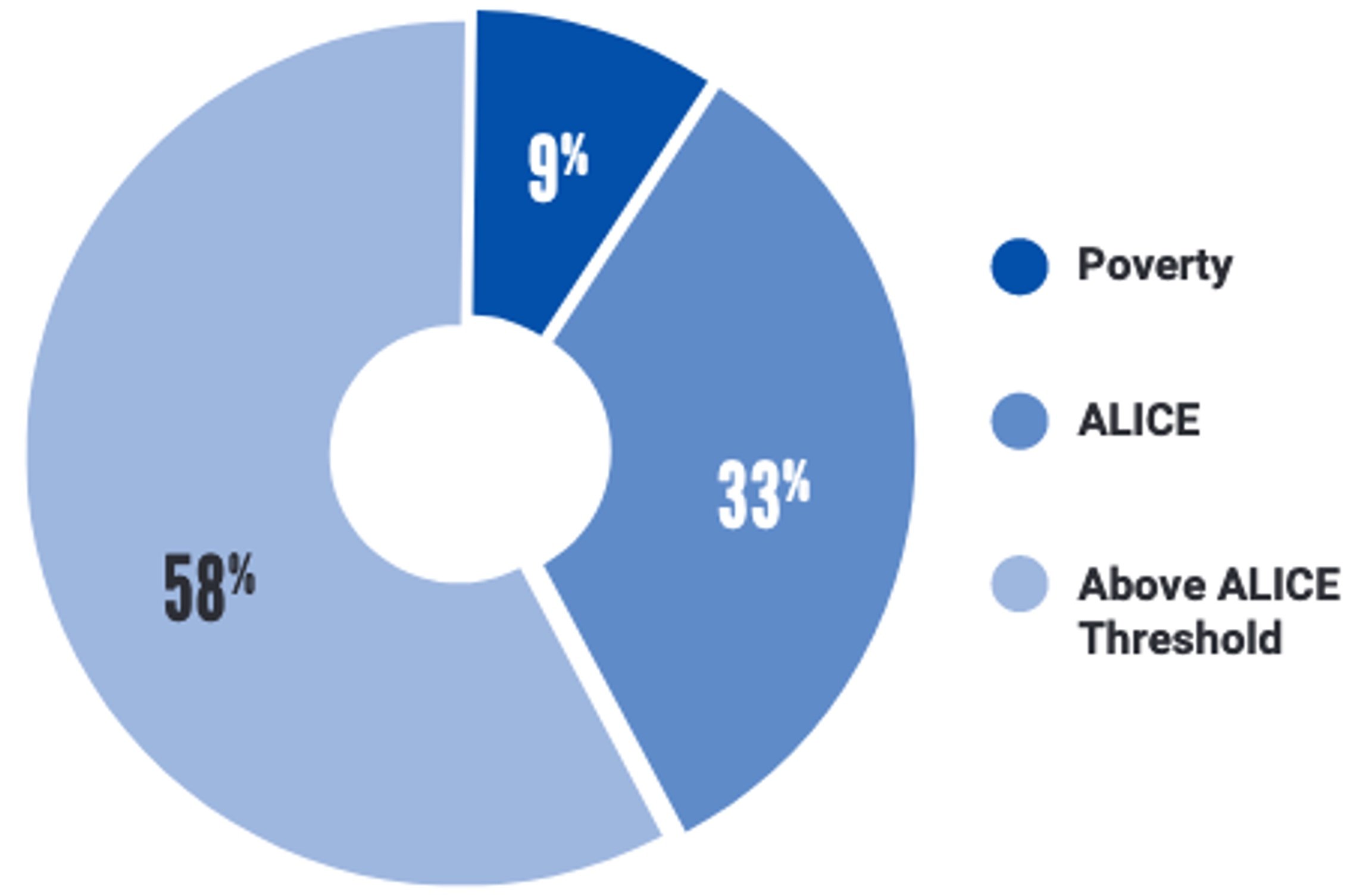Our Focus on Household Need Data in 2022
by Nick Redding, Hawai‘i Data Collaborative
As we embark on a new year of collaboration to make meaning from data for solving Hawai‘i’s pressing challenges, we at the Hawai‘i Data Collaborative (HDC) remain focused on the landscape of data in Hawai‘i, working to identify opportunities to advance data insights where needed most. Responding to the challenges of the pandemic, we learned a lot about the extent to which data and data systems in Hawai‘i support important work, and where they fall short in guiding how we understand what is happening and what to do about it.
Over the past almost two years, in addition to COVID and federal funds data projects, we have frequently been asked to support another critical data challenge: how to identify and gain insight from data to understand households in need of assistance. Prior to the onset of the pandemic, the Aloha United Way ALICE report provided the best estimate – 42% of households were struggling to get by, or were already in poverty. How has that number shifted as a result of the pandemic induced economic shock? Which households are struggling? What are they struggling with? Is the emergency assistance helping?

Source: ALICE in Hawai'i: A Financial Hardship Study, 2020
It was quickly apparent that the data we traditionally relied upon to understand household need - primarily U.S. Census data – was not going to help. Most traditionally relied upon data sources were one to two years old (including that which informed the ALICE report) – some even older. Organizations working to support struggling households during the pandemic needed data that was timely, locally relevant, and granular enough to reflect current community circumstances. We learned three things from working with these organizations during the pandemic:
We rely heavily on data that is disconnected from the local needs of those working to support households in need;
There are few shortcuts to improving access to timely, quality data when it is needed the most; and
Organizations working directly with households are not sufficiently supported to analyze their data and share it for broader insight.

While these fundamental data limitations have always been problematic, the urgencies of the pandemic elevated these critical limitations. We wanted to understand this better by hearing from those committed to providing support to households: what does it mean to have access to quality, timely and relevant data? Late last year, we interviewed multiple leaders of organizations supporting households in need to understand how readily they are able to gain insight from the data they collect while doing their work, and the extent to which they are able to effectively share data amongst peer organizations, government agencies and private sector funders to gain broader insights. We learned a lot from these discussions.
At a high level, we learned that organizations working to support Hawai‘i’s households aspire to do more with data internally and as a part of a community of stakeholders working on similar challenges. Leaders expressed a consistent desire for more data capacity and the need for support to build that capacity. This held for leaders working directly with households, as well as those funding that work who need better data to inform funding priorities, inspiring us to make household need data our focus for 2022.
Going forward, we will support the community of individuals and organizations supporting households in need by:
Refining and formalizing our ability to provide direct Data Capacity Support to service-providing organizations;
Developing and expanding a suite of publicly available Household Need Data tools to help everyone access currently available data; and
Continuing to promote a common understanding and language around the importance of data in Hawai‘i that catalyzes efforts to make essential data widely and readily available.
It may be many years before Census and other traditional data sources reasonably reflect current circumstances, depending upon the course of the pandemic and economic recovery. Regardless, reliance on these data sources has always limited local understanding. We believe service-providing organizations are best-placed to collect and report relevant data that would inform responses to household need at all levels. By providing direct data capacity support to these organizations, while developing the enabling capacities of those who support their work, we hope to enhance the quality, timeliness and relevance of data available to all stakeholders working to address household need in Hawai‘i.
